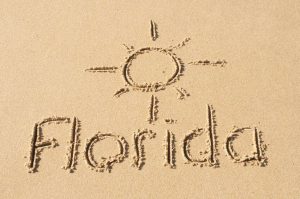
Cash flow is severely reduced when a tenant does not pay in cash flow definition real estate full and it’s literally non-existent if your tenant misses a payment. On top of that, you’re now forced to cover all expenses out of pocket (mortgage, if you have one, insurance, taxes, etc.). Here’s a real-life example of how to calculate the monthly cash flow from a property I own in Indianapolis (a Roofstock market). Total corporate debt, including the short-term portion, net of cash and cash equivalents (net corporate debt), totaled $2.5 billion at September 30, 2024. The Company ended the quarter with cash and cash equivalents of $102 million.
Sign up for our educational newsletter and to gain early access to our next investment opportunity.

The key here is to not take a cash-on-cash return entirely at face value, and make sure you understand the operating risk you’re taking on in exchange for increasing that cash-on-cash yield at higher LTV levels. Speaking of debt, the next thing worth mentioning about the cash-on-cash return is that this is metric is heavily dependent on leverage levels. Past this point, we create a waterfall schedule to split up the cash flows to the Developers and Investors based on the overall Equity IRR.
Cash flow definition for real estate investors 2020 edition + scenarios
Generally, investors look for at least a 1.25 cash flow ratio, meaning that for every dollar of expenses, the property brings in $1.25 in income. This ratio ensures that a property will not only be able to cover its financial obligations but also offer its owners some profit, hence making it a reliable and sustainable investment. According to the 1% rule, the property should generate at least $2,000 monthly rental income to be considered a good investment. If the expected rental income meets or exceeds this amount, the property will likely provide positive cash flow, making it a potentially sound investment. Cash-on-cash return, sometimes referred to as the cash yield on a property investment, measures commercial real estate investment performance and is one of the most important real estate ROI calculations. Essentially, this metric provides business owners and investors with an easy-to-understand analysis of the business plan for a property and the potential cash distributions over the life of the investment.

Calculating Net Operating Income
- In real estate financial modeling, these metrics are important for both lenders (they indicate downside risk) and owners (they indicate Debt capacity).
- For example, if we take a look at a deal purchased for $10 million at a 6% cap rate, if we were to purchase the property on an unlevered basis (without debt), our cash-on-cash return would also be 6%.
- Conversely, properties in declining areas might see reduced rental income potential.
- Banks and other financial institutions often require detailed cash flow projections to evaluate the likelihood that an investor can cover mortgage payments and other related costs.
- The owners earn income from this rent, and they use part of it to pay for expenses such as utilities, property taxes, and insurance; in some cases, tenants are responsible for portions of these expenses as well.
Now, most strategies aimed at increasing cash flow will simultaneously boost NOI. So, owners who are able to increase revenue and/or otherwise lower their operational costs will also increase their NOI. That same property, with its more substantial cash flow, will be worth an estimated $4.83 million ($290k / 0.06) retained earnings – a one million dollar increase in value! This is because investors place such a high emphasis on a property’s in-place cash flows (i.e., the NOI) when assessing its worth. However, in some instances, an investor may be willing to purchase a property with little to no (or even negative) cash flow if there are other financial considerations.
Instead, investors who use a cash flow analysis can create a much more accurate forecast for property value and true net cash flow. That’s why it’s important to pay close attention to net cash flow, and to understand how using the wrong net cash flow amount can affect other financial calculations used to value rental real estate. In addition, the down payment affects both the loan amount and the equity position in the property.
- This is the total cash required to buy this property and get a tenant in there.
- Remember, The Return on Investment Quadrant™ analyzes the return for the first year.
- The term “cash flow” is commonly used to describe the amount of money produced by a property.
- A cash-on-cash return is a rate of return often used in real estate transactions that calculates the cash income earned on the cash invested in a property.
- At regular intervals you receive cash distributions from the investment while doing very little – if anything – with the asset you’ve purchased.

We leverage decades of experience, creative solutions, and solid relationships to find high-return opportunities that exceed our clients’ goals. The more cash flow a property generates, the more money will be available to redistribute back to investors, thereby increasing the CoC returns. Given its importance in determining returns, investors are strongly incentivized to maximize the amount of cash flow a property produces.
- Before diving into investments, you need to fully understand what cash flow in real estate is all about.
- Including all of these costs gives you a more accurate return on the rental property that you’re buying.
- For example a multifamily property could add application fees, install vending machines, convert unused space into rentable storage lockers, or charge additional rent for tenants with pets.
- Free cash flow (FCF) is a measure of profitability that some analysts believe1 is more accurate than net income because it reflects the leftover cash in an organization.
- We are editorially independent and may earn commissions from partner links.
- The investor pays $100,000 cash as a down payment and borrows $900,000 from a bank.
- Property taxes are typically a major expense and must be factored into the cash flow calculations as they can change annually based on local government assessments and rate adjustments.
In addition to deriving the current return, the cash-on-cash return can also be used to forecast the expected future cash distributions of an investment. However, unlike a monthly coupon payment distribution, it is not a promised return but is instead a target used to assess a potential investment. In this way, the cash-on-cash return is an estimate of what an investor may receive over the life of the investment. Investors need to understand the relationship between cash flow and ROI to achieve their investment goals. Knowing how to calculate cash flow correctly increases the odds of investing in profitable properties. On the other hand, a business may have positive cash flow but still be unprofitable.
Cash Flow in Real Estate: Overview, Definition & Calculations
Effective property management ensures the timely collection of rent, crucial for consistent cash flow. Additionally, property managers handle complex legal compliance issues, such as evictions, safety regulations, and lease negotiations, which can protect investors from potential lawsuits and financial losses. Overall, the role of property management is critical in stabilizing cash flow and minimizing investment risks, making it a valuable asset for any real estate investor. Maintenance and operational efficiency are also vital cash flow drivers. Well-maintained properties often incur lower repair costs and are more appealing to tenants, leading to higher occupancy rates and longer tenancy periods.

- It helps investors identify potential risks and opportunities, ensuring they are prepared for different market conditions and can adjust their strategies accordingly to maintain or enhance profitability.
- Every investor must take time and perform due diligence before investing in any property.
- Instead, a buyer should create their own cash flow analysis by accurately determining the property’s rental income and monthly expenses.
- The advantage of the build-up method is that it attempts to define and accurately measure individual components of a discount rate.
- And let’s not forget he/she will also take care of all the tedious paperwork and necessary legal steps to finalize a real estate business transaction between a property seller and a property buyer.
In this scenario, the Net Operating Income of $45,000 is an indication of how profitable the property is from operations. To this metric, a capitalization rate (cap rate) is applied to determine value. Because it is done before debt service, it also provides a handy way for real estate investors to compare the operational profitability of one property to another.








